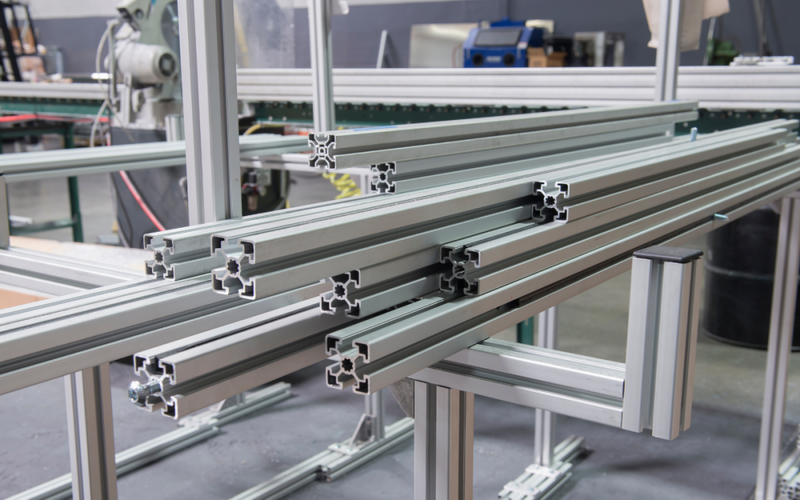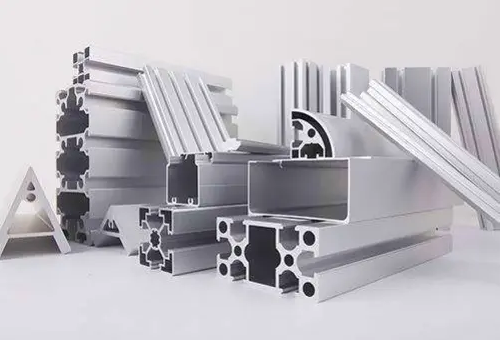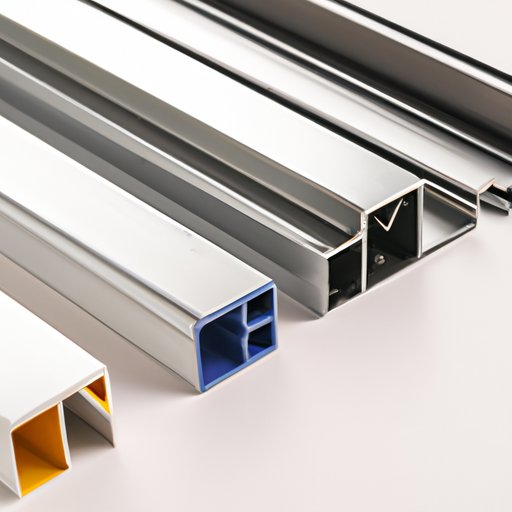Content Menu
● Introduction
● Technical Specifications
● Manufacturing Process
● Key Applications
● Advantages and Benefits
● Design Considerations
● Installation and Assembly
● Maintenance and Care
● Cost Analysis
● Future Trends and Innovations
● Conclusion
● Related Questions
>> 1. What are the main advantages of using 1010 aluminum extrusion in engineering projects?
>> 2. How does the manufacturing process of 1010 aluminum extrusion work?
>> 3. What are some common applications of 1010 aluminum extrusion?
>> 4. How can engineers ensure the proper installation of 1010 aluminum extrusion systems?
>> 5. What maintenance practices are recommended for 1010 aluminum extrusion systems?
Introduction
In the ever-evolving landscape of engineering and manufacturing, the materials and systems used play a crucial role in determining the efficiency, cost-effectiveness, and sustainability of projects. One material that has gained significant traction in recent years is 1010 aluminum extrusion. This versatile material is not only lightweight but also offers exceptional strength and durability, making it an ideal choice for various applications. As we move into 2024, engineers are increasingly switching to 1010 aluminum extrusion systems, driven by its numerous advantages and innovative applications.

Technical Specifications
1010 aluminum extrusion is characterized by its unique composition and properties. It is primarily made from aluminum alloy 6063, which is known for its excellent corrosion resistance and good mechanical properties. The physical properties of 1010 aluminum extrusion include a density of approximately 2.7 g/cm³, which contributes to its lightweight nature. Additionally, it boasts a tensile strength of around 200 MPa, making it strong enough for various structural applications.
The mechanical characteristics of 1010 aluminum extrusion allow for easy machining and fabrication. Its standard dimensions and tolerances are designed to meet the needs of different industries, ensuring that engineers can find the right profile for their specific requirements. This flexibility in design is one of the key reasons why engineers are gravitating towards this material.
Manufacturing Process
The manufacturing process of 1010 aluminum extrusion involves several key steps. First, the aluminum alloy is heated to a specific temperature, making it malleable. It is then forced through a die to create the desired profile. This extrusion technique allows for the production of complex shapes that would be difficult to achieve with other materials.
Quality control measures are integral to the manufacturing process. Engineers ensure that each batch of 1010 aluminum extrusion meets stringent standards for strength, durability, and finish. Surface treatment options, such as anodizing and powder coating, further enhance the material's properties, providing additional protection against corrosion and wear.
Customization capabilities are another significant advantage of 1010 aluminum extrusion. Engineers can work with manufacturers to create bespoke profiles tailored to their specific project needs, ensuring optimal performance and functionality.
Key Applications
The versatility of 1010 aluminum extrusion makes it suitable for a wide range of applications across various industries. In industrial automation, for instance, it is commonly used to create frames and structures for machinery and equipment. Its lightweight nature allows for easy installation and modification, making it a favorite among engineers.
In construction and architecture, 1010 aluminum extrusion is utilized for window frames, curtain walls, and structural components. Its aesthetic appeal, combined with its strength, makes it an attractive choice for modern buildings. Additionally, in transportation systems, 1010 aluminum extrusion is used in the manufacturing of lightweight components for vehicles, contributing to improved fuel efficiency and performance.
Furniture and fixtures also benefit from the use of 1010 aluminum extrusion. Designers appreciate its sleek appearance and durability, making it a popular choice for contemporary furniture designs. Furthermore, in clean room environments, where contamination control is critical, 1010 aluminum extrusion provides a non-porous surface that is easy to clean and maintain.

Advantages and Benefits
The advantages of 1010 aluminum extrusion are numerous. One of the most significant benefits is its strength-to-weight ratio. Engineers can design structures that are both lightweight and strong, reducing the overall weight of projects without compromising safety or performance.
Corrosion resistance is another key advantage. 1010 aluminum extrusion is naturally resistant to rust and corrosion, making it suitable for outdoor applications and environments where exposure to moisture is a concern. This durability translates to lower maintenance costs and longer service life.
Design flexibility is a hallmark of 1010 aluminum extrusion. Engineers can create intricate designs and profiles that meet specific project requirements, allowing for greater creativity and innovation in design. Additionally, the cost-effectiveness of 1010 aluminum extrusion makes it an attractive option for projects with budget constraints.
Sustainability is becoming increasingly important in engineering and manufacturing. 1010 aluminum extrusion is recyclable, making it an environmentally friendly choice. Engineers can contribute to sustainability efforts by selecting materials that have a lower environmental impact.
Design Considerations
When designing with 1010 aluminum extrusion, engineers must consider several factors. Load-bearing capabilities are crucial, as the material must support the intended weight and stress without failure. Engineers often conduct simulations and calculations to ensure that their designs meet safety standards.
Assembly methods are also important. 1010 aluminum extrusion can be easily joined using various techniques, including welding, bolting, and adhesive bonding. Engineers must choose the appropriate method based on the specific application and design requirements.
Environmental factors play a role in the design process as well. Engineers must consider the conditions in which the 1010 aluminum extrusion will be used, including temperature fluctuations, humidity, and exposure to chemicals. This ensures that the material will perform optimally in its intended environment.
Installation and Assembly
The installation and assembly of 1010 aluminum extrusion systems require careful planning and execution. Engineers must select the right tools and equipment for the job, ensuring that they have the necessary resources to complete the installation efficiently.
Best practices for installation include following manufacturer guidelines and ensuring that all components are properly aligned and secured. Common challenges during installation may include misalignment, which can lead to structural issues. Engineers must be vigilant in addressing these challenges to ensure a successful installation.
Safety considerations are paramount during the installation process. Engineers must adhere to safety protocols to protect workers and ensure that the installation is completed without incident.
Maintenance and Care
Maintaining 1010 aluminum extrusion systems is relatively straightforward. Regular cleaning procedures help to remove dirt and debris, ensuring that the material remains in good condition. Engineers recommend using mild detergents and soft cloths to avoid scratching the surface.
Preventive maintenance is essential for prolonging the life of 1010 aluminum extrusion systems. Engineers should conduct routine inspections to identify any signs of wear or damage. If repairs are needed, engineers can utilize various techniques, including welding or replacing damaged sections.
Longevity factors also play a role in the maintenance of 1010 aluminum extrusion. Engineers must consider the environmental conditions in which the material is used, as exposure to harsh elements can impact its performance over time.
Cost Analysis
When evaluating the cost of 1010 aluminum extrusion systems, engineers must consider both the initial investment and long-term value. While the upfront cost may be higher than some alternatives, the durability and low maintenance requirements of 1010 aluminum extrusion often result in lower overall costs over the life of the project.
Comparing 1010 aluminum extrusion with other materials, such as steel or plastic, reveals its advantages in terms of weight, strength, and corrosion resistance. Engineers can conduct a return on investment (ROI) analysis to demonstrate the long-term benefits of choosing 1010 aluminum extrusion for their projects.
Future Trends and Innovations
As we look to the future, several trends and innovations are emerging in the field of 1010 aluminum extrusion. Engineers are exploring new applications in industries such as renewable energy, where lightweight and durable materials are essential for solar panel frames and wind turbine components.
Technological advancements in manufacturing processes are also paving the way for more efficient production of 1010 aluminum extrusion. Automation and robotics are being integrated into the manufacturing process, resulting in higher precision and reduced lead times.
Industry developments, such as the push for sustainability, are driving engineers to seek out materials that have a lower environmental impact. 1010 aluminum extrusion fits this criterion, making it a popular choice for forward-thinking engineers.
Conclusion
In conclusion, the shift towards 1010 aluminum extrusion systems in 2024 is driven by a combination of factors, including its technical specifications, manufacturing process, key applications, advantages, and design considerations. Engineers are recognizing the numerous benefits of this material, from its strength-to-weight ratio to its corrosion resistance and sustainability. As industries continue to evolve, 1010 aluminum extrusion will undoubtedly play a pivotal role in shaping the future of engineering and manufacturing.

Related Questions
1. What are the main advantages of using 1010 aluminum extrusion in engineering projects?
1010 aluminum extrusion offers a high strength-to-weight ratio, excellent corrosion resistance, design flexibility, and cost-effectiveness, making it an ideal choice for various applications.
2. How does the manufacturing process of 1010 aluminum extrusion work?
The manufacturing process involves heating aluminum alloy, forcing it through a die to create the desired profile, and applying quality control measures to ensure strength and durability.
3. What are some common applications of 1010 aluminum extrusion?
Common applications include industrial automation, construction, transportation systems, furniture design, and clean room environments.
4. How can engineers ensure the proper installation of 1010 aluminum extrusion systems?
Engineers should follow manufacturer guidelines, use appropriate tools, and conduct routine inspections to ensure proper alignment and secure assembly.
5. What maintenance practices are recommended for 1010 aluminum extrusion systems?
Regular cleaning, preventive maintenance, and routine inspections are essential for prolonging the life of 1010 aluminum extrusion systems.






















